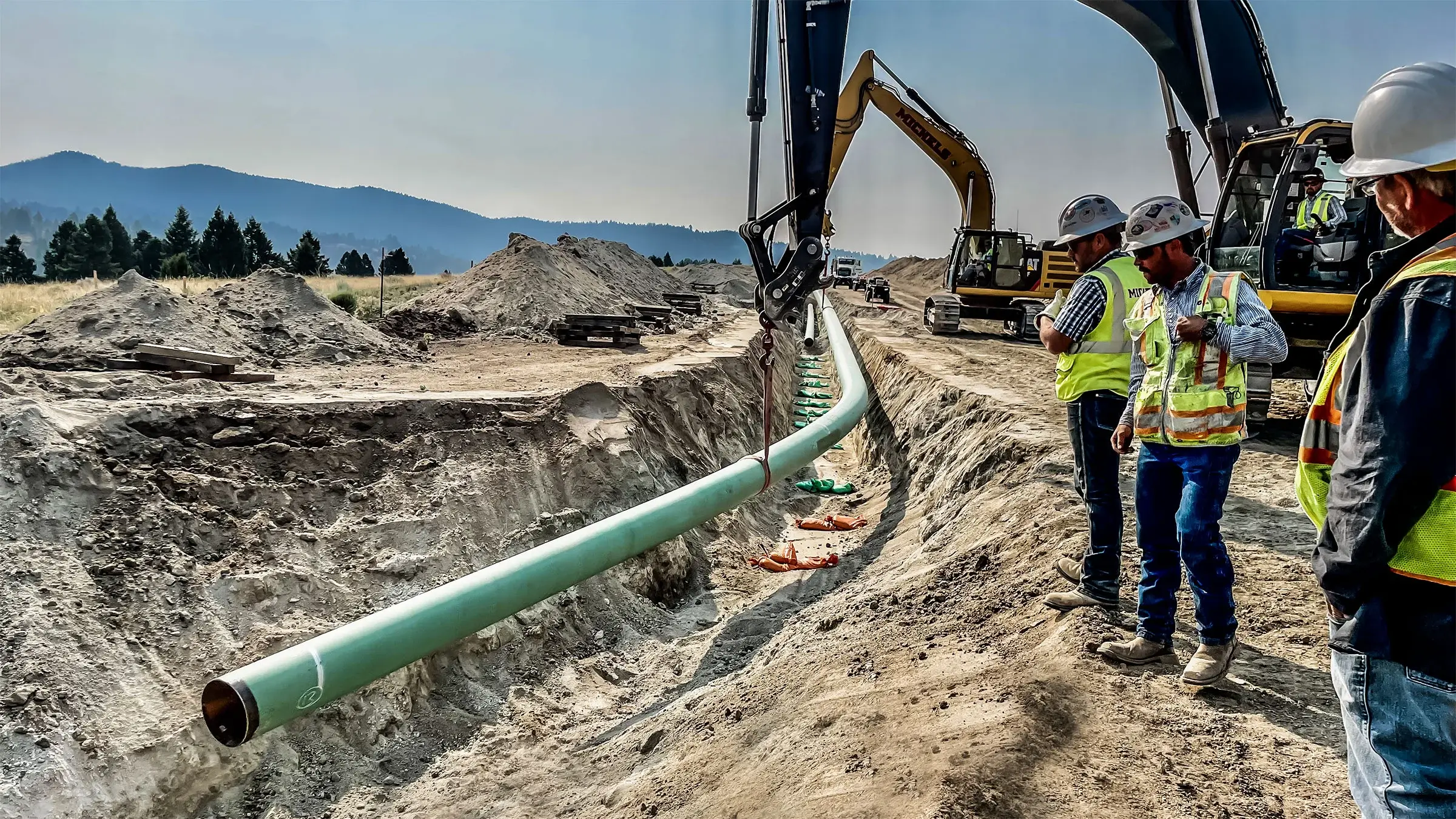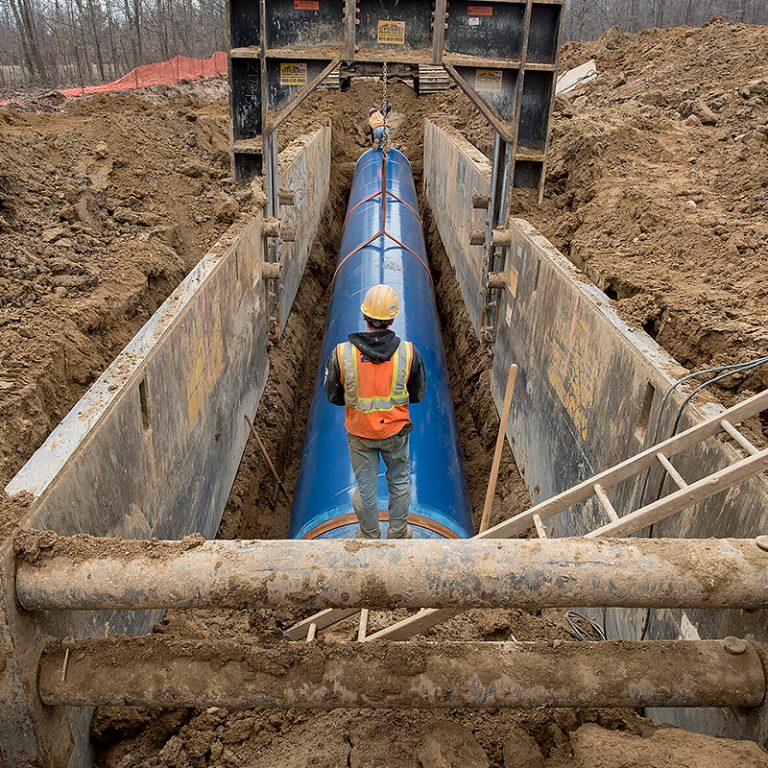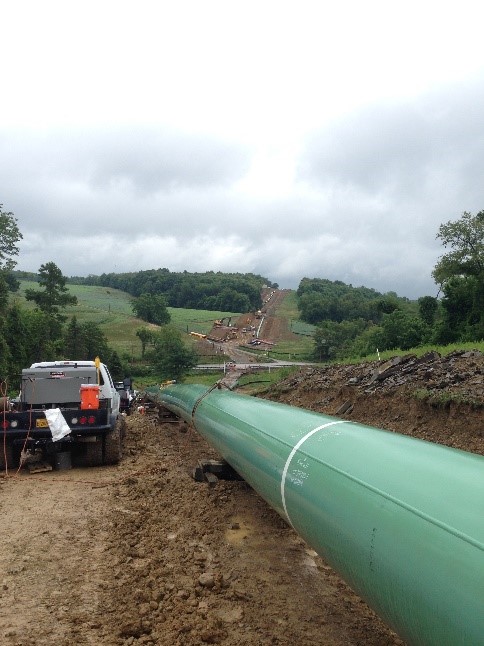Are You Compliant? Local Building Codes Through Creek Pipe Company
Recognizing the Basics of Pipes Installation: What You Need to Learn About the Process
Proper pipe installation is necessary for any kind of pipes system. It calls for mindful factor to consider of different variables, consisting of product choice and adherence to neighborhood laws. A tactical layout can protect against concerns like stress loss, while the right tools ensure effective joining techniques. Nonetheless, even experienced installers can make usual mistakes. Comprehending these fundamentals can result in a more reliable and long lasting system, triggering a better take a look at the crucial elements entailed in the procedure.
Choosing the Right Materials for Pipe Installation
When considering pipe installation, the selection of ideal products is crucial to making certain durability and capability. Numerous materials are offered, each offering unique benefits and factors to consider. PVC pipelines are lightweight, resistant to deterioration, and cost-effective, making them perfect for residential pipes. Alternatively, copper pipelines, recognized for their longevity and capability to endure high temperature levels, are frequently chosen for heating systems.Additionally, galvanized steel pipelines provide strength and sturdiness, suitable for heavy-duty applications, although they are susceptible to rust over time.For below ground installations, polyethylene pipes are preferred due to their versatility and resistance to stress and anxiety breaking. Appropriate product selection depends upon the details requirements of the job, including pressure rankings, temperature variations, and the chemical nature of the fluids being moved - Creek Pipe trenching services. Eventually, notified selections pertaining to pipe products contribute significantly to the general success and long life of pipes systems
Recognizing Local Building Regulations and Regulations
How can comprehending local structure codes and guidelines influence pipe installation? Knowledge with these codes is necessary for ensuring that pipe setups are secure, compliant, and effective. Neighborhood building ordinance detail certain demands concerning products, installation methods, and safety procedures, which must be followed to avoid potential legal issues and expensive fines.Failure to abide can result in examinations being fallen short, delays in task conclusion, and even mandated elimination of improperly installed pipelines. Additionally, recognizing zoning legislations and guidelines can influence the sort of materials allowed, along with the approaches utilized for installation.Contractors and property owners alike should spend time in reviewing neighborhood guidelines before beginning any type of installation project. This aggressive technique not just advertises safety yet likewise improves the overall high quality and resilience of the pipes system, eventually fostering long-term functionality and complete satisfaction.
Preparation Your Pipe Design and Layout
Proper preparation of pipe design and design is necessary for accomplishing a reliable plumbing system. This procedure begins with reviewing the particular needs of the room, thinking about the area of fixtures and home appliances. Precise dimensions guarantee that pipelines are properly transmitted, decreasing bends and transforms that can result in pressure loss.Consideration of the flow prices and the sorts of materials used is essential, as various materials have differing resilience and compatibility with pipes systems. Additionally, the designer must make up future expansions or adjustments to the format, enabling flexibility in situation of renovations.Efficient water drainage and air flow are also considerable elements of the layout, as they prevent clogs and ensure correct waste elimination. Finally, partnership with regional building regulations ensures conformity and safety and security, which is paramount in any plumbing installation job.
Essential Tools and Equipment for Installation
Successful pipe installation hinges on having the right devices and devices handy. Crucial devices consist of pipe cutters for clean cuts, wrenches for tightening fittings, and pliers for gripping and turning pipes. Furthermore, a level guarantees pipes are set up uniformly, while a gauging tape help in achieving precise lengths.For particular products, a welding torch may be necessary for copper pipelines, while a PVC cutter is essential for plastic alternatives. Safety equipment, such as handwear covers and safety glasses, shields installers from possible threats during the process.A pipe bender can be especially helpful for developing smooth contours without endangering stability, while a torque wrench assurances that links are safeguarded to the supplier's specifications.Having these tools readily available not only facilitates a smoother installation procedure however also adds to the general toughness and performance of the plumbing system. Appropriate equipment is critical in attaining resilient results.
Strategies for Proper Pipe Signing Up With and Sealing
Attaining a safe and leak-free connection in between pipes needs careful interest to joining and securing techniques. Different methods exist, each fit to various pipe materials and applications (Creek Pipe roustabout). For instance, welding is often utilized for steel pipes, ensuring robust links through warm blend. On the other hand, plastic pipes profit from solvent concrete or combination welding, creating solid, long-term bonds.Threaded connections prevail in both steel and plastic piping, requiring accurate alignment and making use of ideal sealants, such as Teflon tape or pipe dope, to stop leakages. Compression installations offer another choice, where mechanical stress secures the pipes with each other, making them conveniently disassembled for maintenance.Regardless of the method selected, appropriate prep work is important. This includes cleaning pipe ends and ensuring they are devoid of particles. Applying these strategies diligently will enhance the longevity and reliability of the pipe system, ultimately adding to its efficient performance
Common Mistakes to Avoid Throughout Installation
Throughout pipe installation, staying clear of usual blunders is crucial for guaranteeing a trustworthy and reliable system. One constant mistake is falling short to gauge and reduce pipelines precisely, which can result in incorrect fittings and leaks. Additionally, neglecting to check the compatibility of materials can result in rust or various other damages with time. Improperly securing joints and connections can also develop weak factors in the system, creating prospective failures.Another typical mistake is overlooking the importance of incline and drain; pipes should be mounted at the right angle to promote appropriate circulation. Inadequate assistance for pipelines can bring about sagging and stress Homepage and anxiety, affecting the integrity of the system. Inevitably, neglecting local codes and regulations can cause expensive rework and safety hazards. By recognizing these challenges, installers can considerably enhance the resilience and efficiency of pipe systems.
Maintenance Tips for Durable Pipe Systems
To ensure the longevity of pipe systems, routine examinations and Our site cleansing are important practices. These actions help determine possible concerns prior to they escalate into significant troubles. Additionally, utilizing correct insulation strategies can even more secure pipelines from temperature fluctuations and environmental variables.
Normal Inspections and Cleaning Up
Routine evaluations and cleansing are vital for keeping the longevity and effectiveness of pipe systems. Regularly taking a look at pipelines for indications of deterioration, leakages, or blockages can assist recognize possible issues prior to they intensify right into costly repair services. Cleaning pipes regularly eliminates build-up that can limit flow and advertise damage. It is suggested to schedule examinations a minimum of annually, yet a lot more frequent checks may be necessary in high-usage settings. Utilizing specialist services for comprehensive cleansing warranties that all particles is successfully gotten rid of. Additionally, maintaining documents of examinations and upkeep tasks aids in tracking the system's health in time - Creek Pipe Company. By prioritizing these techniques, home proprietors can improve the integrity and life expectancy of their pipe systems
Appropriate Insulation Techniques
Effective insulation techniques play a vital duty in maintaining the effectiveness and longevity of pipe systems. Appropriate insulation minimizes heat loss in hot water pipelines and protects against cold in chilly water pipes, significantly decreasing power costs and prospective damages. Common products made use of for insulation include fiberglass, foam, and rubber, check over here each offering differing levels of thermal resistance. It is crucial to assure that insulation is used uniformly, covering all revealed areas without voids. Additionally, protecting insulation with ideal fasteners helps preserve its placement and efficiency with time. Normal inspections must be carried out to recognize wear and tear, assuring prompt replacements. By implementing these strategies, pipe systems can run successfully and have an extensive service life, ultimately benefiting both the atmosphere and the house owner.

Regularly Asked Inquiries
Just how Do I Identify the Appropriate Pipe Dimension for My Project?
Figuring out the ideal pipe dimension involves examining the job's flow requirements, stress requirements, and the kind of fluid being moved. Consulting style requirements and carrying out estimations warranties optimal performance and effectiveness in the installation procedure.
What Are the Ecological Influences of Various Pipe Materials?

Can I Mount Pipes Myself or Should I Work with a Specialist?
The concern of whether to set up pipelines separately or employ a specialist often relies on the individual's ability degree and job complexity. A specialist might assure conformity with regulations and lower potential long-term concerns.

For How Long Can I Anticipate My Pipe Installation to Last?
The long life of pipe installation varies significantly, typically lasting 20 to 100 years, relying on materials, installation high quality, and upkeep. Routine inspections and appropriate care can improve durability and stop early failures.

What Are the Signs of a Failing Pipe System?
Indicators of a falling short pipe system consist of constant leakages, uncommon water stress adjustments, stained water, mold and mildew development, and persistent dampness. Home owners should keep an eye on these indications to prevent costly damages and guarantee prompt repair services are made.